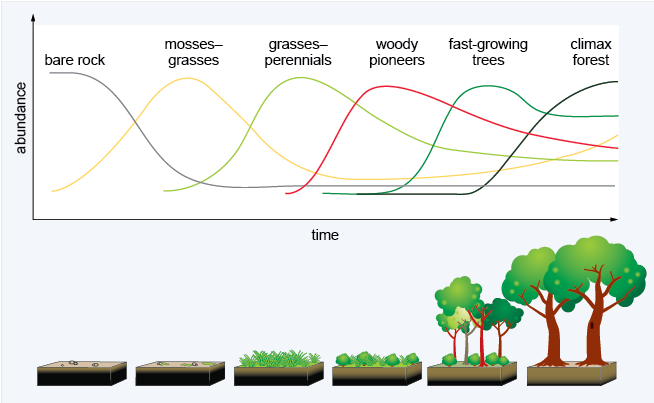
Figure 21 Diagrammatic representation of forest succession over time. There is a steady increase in biodiversity, biomass and thickness of soil layer as succession proceeds, i.e. as time passes.
Personalise your OpenLearn profile, save your favourite content and get recognition for your learning